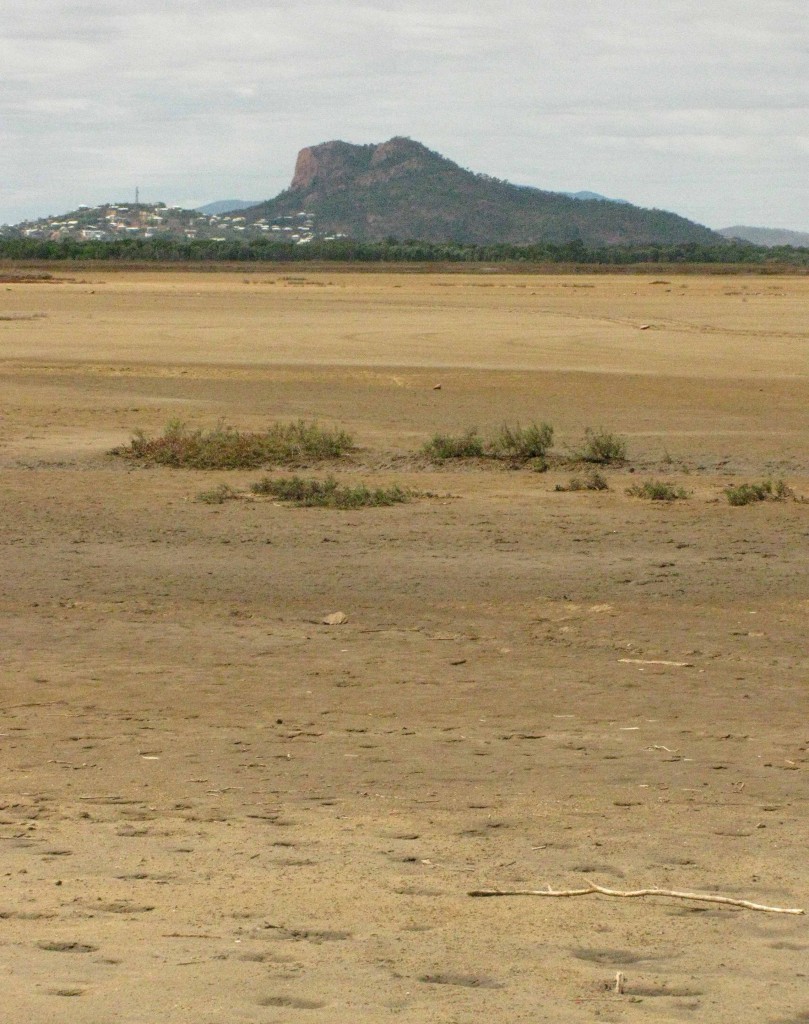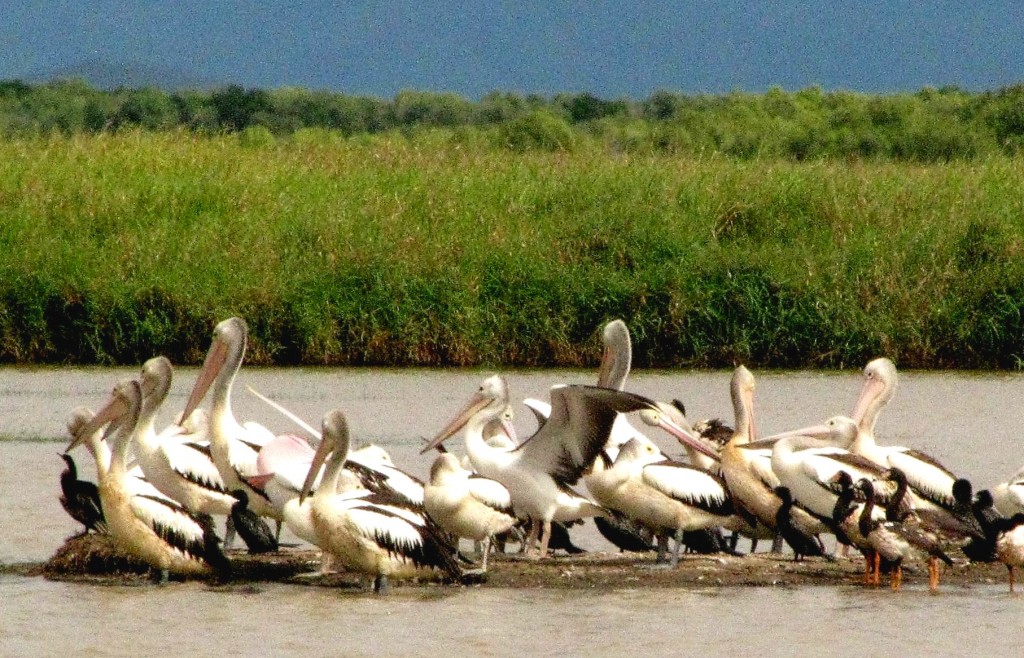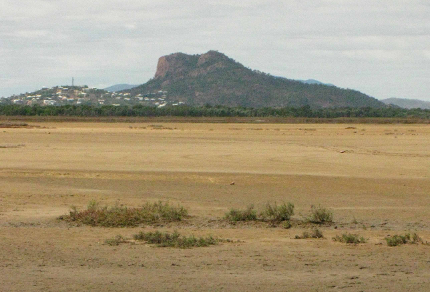As a reward for catching up my blog posts earlier this week, I spent much of the morning birding at the Townsville Town Common Conservation Park, a huge wetland and forest park on the outskirts of Townsville. First set aside in 1870 as an old-country common where cattle and horses grazed, the Common was transformed into a conservation park in 1983 in recognition of its value as wildlife habitat. The forested portion of the park contains savannah woodland and vine thicket, while the water-related habitats include saltpans and saline mudflats, mangroves, and freshwater swamps and deep lagoons. I sampled a variety of these habitats and for the first time hit 60 species on a single outing, although only one of those – a brown falcon – was new to me and thus a “lifer” in birding lingo.

Dry Season at the Townsville Town Common Conservation Park (© Magi Nams)
With the wet long over, mudflats which had appeared as endless shallow wetlands in early April, today stretched brown and barren toward Castle Hill in the distance. Temporary ponds still fringed with green but bearing grey, dry centres of soil rather than water had been abandoned by wetland birds. Even the deep freshwater lagoons had shrunk markedly since Vilis’s and my last visit six weeks ago, when we came seeking basking monitors. Correspondingly, the numbers of water birds per area of remaining wetland were much higher, with helpful (from a birder’s perspective) concentrations of egrets, ibises, spoonbills, geese, ducks, and other assorted dwellers of the liquid medium. I observed all three species of ibises – glossy, straw-necked, and Australian white – foraging in close proximity, and saw a half-dozen species – Australian pelican, wandering whistling duck, anhinga, little black cormorant, magpie goose, intermediate egret – resting on a single, narrow strip of exposed mud.

Wetland Avifauna at Townsville Town Common Conservation Park (© Magi Nams)
The woodlands were alive with the musical songs of honeyeaters, the squeals of lorikeets, and the ribald chortling of kookaburras. Yellow-bellied sunbirds and mistletoebirds foraged and sang at the tops of gums, the iridescent throat feathers of a male sunbird flashing blue-black in the sun, the brilliant scarlet ones of a male mistletoebird searing the eye with neon red. A Brahminy kite, and later a whistling kite, perched atop dead trees, inspecting me as I crept toward a shallow forest pond occupied by Pacific black ducks, little black cormorants, and a royal spoonbill. I startled agile wallabies foraging on grasses, and blue tiger and swamp tiger butterflies that fluttered around me in thick, drying, pathside vegetation.
Where a bush road led to the fenced boundary of an airfield, I spotted a bush stone-curlew skulking at the forest edge and a reddish-brown raptor winging low over a stretch of grass in the airfield before swooping up to land on the peak of a hangar. Unable to identify the raptor using my binoculars, I set up my spotting scope on a tripod to magnify it, zeroed in on its fieldmarks – double vertical streaks enclosing a white cheek patch, greyish legs, rich, barred, red-brown plumage, vertical perching stance – and concluded confidently that I’d just observed my first brown falcon. As I slipped the lens caps back on the scope, a fellow dressed in camouflage drove up and said, “You know you’re not allowed to take pictures of the base.” It turns out that I was looking onto Townsville’s Royal Australian Air Force base, not the airport, as I had thought. I explained to him about the falcon, and that I had been looking through a scope, not a camera. “Allright. No worries, then,” he said, and drove off. In my three decades of birding, I’ve bogged down in swamps and bypassed grizzly dung, but I’ve never before been suspected of spying!
Today’s fauna: blue-faced honeyeater, mynas, white-breasted woodswallows, rock doves, great bowerbird, rainbow lorikeets, blue-winged kookaburras, peaceful doves, masked lapwings, brown honeyeaters, spangled drongoes, nutmeg mannikins, Australian raven, golden-headed cisticolas, pheasant coucals, white-bellied cuckoo-shrikes, brush cuckoo, Pacific black ducks, rainbow bee-eaters, yellow honeyeater, white-throated honeyeaters, Brahminy kite, magpie-larks, royal spoonbills, intermediate egrets, bar-shouldered dove, little black cormorants, black-faced cuckoo-shrikes, Australian magpies, whistling kites, yellow-bellied sunbirds, mistletoebird, varied triller, scaly-breasted lorikeets, Torresian crows, little shrike-thrush, leaden flycatchers, double-barred finches, brolgas, fairy martin, bush stone-curlew, *brown falcon, magpie geese, great egrets, welcome swallows, Australian pelicans, anhingas, wandering whistling duck, gull-billed tern, hardheads, little egret, black-necked storks, sacred kingfisher, glossy ibises, straw-necked ibises, Australian white ibises, black-winged stilts, white-faced herons, Nankeen kestrel, black kite. Also, several agile wallabies and blue tiger and swamp tiger butterflies. (*denotes lifelist sighting)


